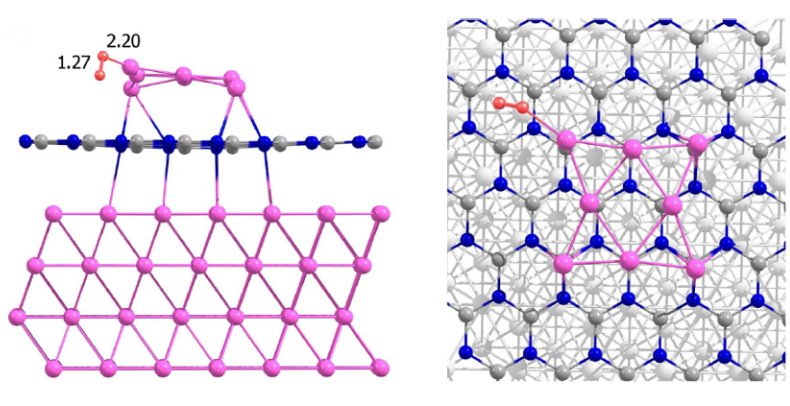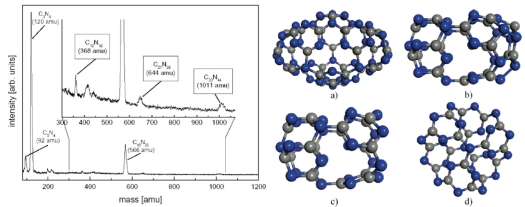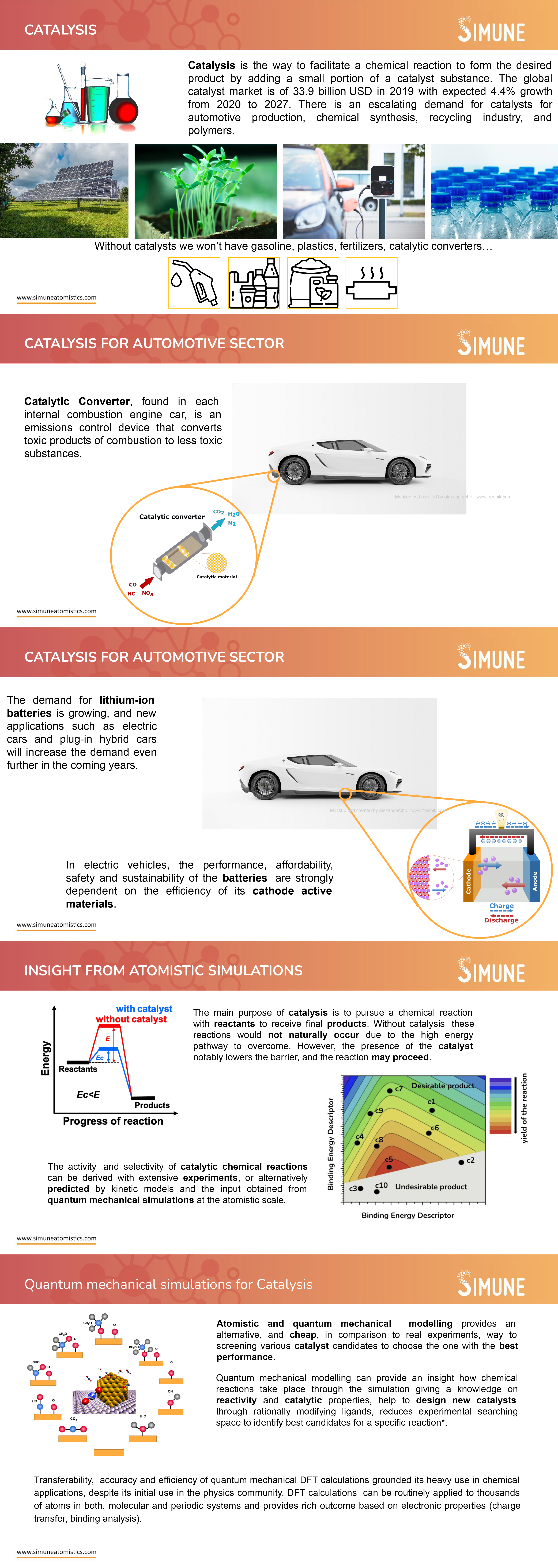SIESTA CASE STUDIES FOR CATALYSIS

Catalytic activity toward oxygen reduction.
A DFT study with the SIESTA code has been performed by by W. Orellana et al. The study demonstrates catalytic activity of transition metal porphyrin MnP complex on Carbon NanoTubes that satisfies the initial conditions toward the oxygen reduction reaction. The latter can potentially substitute platinum as a catalyst in polymer electrolyte membrane fuel cells:

Gold Cluster on h-BN for Catalysis Towards Oxygen Reduction.
The SIESTA code has been used to provide an insight into nano-catalysis: A. Lyalin et al. demonstrated that gold nanoparticles deposited on the hexagonal boron nitride/gold h-BN/Au(111) surface provide catalytically active sites for the effective oxygen reduction reaction (ORR). One step closer to developing an effective electro-catalyst.
A. Lyalin, K. Uosaki, T. Taketsugu “Oxygen Reduction Reaction Catalyzed by Small Gold Cluster on h-BN/Au(111) Support” Electrocatalysis, 9, 182 (2018).

Azafullerene-like Nanosized Clusters
Carbon nitride materials have extraordinary potential in various applications, including catalysis, filled/particles, and super hard materials. However, synthesis and analysis of the nano-structures is still a challenge. In this study, SIESTA DFT simulations of structure and stability of novel nitrogen-rich CN nano-cages complemented experimental XPS, AFM and TEM results providing an insight into the nature of the peaks observed with the mass spectrometry:
V. Lopez, G. Roman Perez, A. Arregui, E. Mateo-Marti, L. Banares, J.A. Martin-Gago, J. M. Soler, J. Gomez-Herrero, F. Zamora “Azafullerene-like Nanosized Clusters” ACS Nano, 3 (11), 3352-3357 (2009)



